Key Takeaways
- SEO Mastery Matters: Elevate your brand’s visibility by mastering the latest SEO tactics. Stay ahead of algorithm updates, optimize for voice search, and craft compelling content to dominate search engine rankings.
- Tech Integration is Non-Negotiable: Embrace emerging technologies like AI, AR, and VR to captivate audiences with immersive experiences. Tech-savvy brands lead the way in engaging the modern consumer and staying relevant in 2024.
- Strategic Partnerships Propel Presence: Forge powerful collaborations with influencers, cross-industry partners, and local businesses. Strategic partnerships amplify reach, tap into diverse audiences, and redefine the rules of brand visibility in the dynamic digital landscape.
In an era marked by incessant digital evolution and rapidly changing consumer behaviors, the quest for heightened brand visibility has become more paramount than ever before.
As we embark upon the threshold of 2024, the landscape of business and marketing is undergoing dynamic transformations, necessitating a strategic recalibration of brand visibility tactics.

The Significance of Brand Visibility in the Digital Epoch
Why is brand visibility such a critical aspect of contemporary business strategy, you may wonder?
The answer lies in the relentless digital sprawl that defines the current marketplace.
With consumers more connected than ever, traversing an intricate web of social media platforms, search engines, and online communities, the battleground for consumer attention has become fiercely competitive.
A brand’s visibility is no longer a mere accessory; it’s a linchpin that can determine success or obscurity in a crowded and dynamic digital arena.
The Evolutionary Landscape of 2024: A Prelude to Digital Dynamics
As we navigate through the digital ecosystem of 2024, it’s imperative to acknowledge the seismic shifts in consumer preferences and technological advancements that continue to shape the way brands are perceived and discovered.
The omnipresence of smartphones, the rise of new social media paradigms, and the integration of emerging technologies like augmented reality and artificial intelligence have reshaped the landscape in which brands operate.
Adapting to Thrive: The Imperative of Proactive Brand Visibility Strategies
To stay ahead of the curve, businesses must not only adapt but proactively harness these changes to amplify their brand visibility and resonate with their target audience.
This blog serves as your compass through the intricacies of modern brand visibility strategies, offering a roadmap tailored to the nuances of 2024.
Who Can Benefit: A Universal Guide for Marketers, Entrepreneurs, and Established Brands
Whether you are a seasoned marketer, a burgeoning entrepreneur, or an established brand seeking a revitalized presence, the insights encapsulated herein transcend conventional wisdom to embrace the cutting-edge dynamics of the digital realm.
Beyond Conventional Wisdom: A Manifesto for Brand Elevation in 2024
Join us on a journey that transcends the traditional realms of marketing, exploring the amalgamation of social media prowess, search engine optimization finesse, influencer alchemy, and the judicious integration of emerging technologies.
This is not just a guide; it’s a manifesto for brand elevation in an era where visibility isn’t a luxury but a strategic imperative.
The Unveiling: Unraveling the Layers of Brand Visibility in 2024
Buckle up as we unravel the layers of brand visibility, dissect the tactics that resonate in 2024, and empower you with the knowledge to not just navigate but dominate the digital landscape.
A Future-Centric Approach: Guiding Your Brand Amid the Digital Noise
The future awaits, and with the right strategies, your brand can emerge as a beacon amid the digital noise, captivating audiences and carving its indelible mark in the annals of 2024’s business landscape.
But, before we venture further, we like to share who we are and what we do.
About AppLabx
From developing a solid marketing plan to creating compelling content, optimizing for search engines, leveraging social media, and utilizing paid advertising, AppLabx offers a comprehensive suite of digital marketing services designed to drive growth and profitability for your business.
AppLabx is well known for helping companies and startups use digital marketing to drive web traffic to their websites and web apps.
At AppLabx, we understand that no two businesses are alike. That’s why we take a personalized approach to every project, working closely with our clients to understand their unique needs and goals, and developing customized strategies to help them achieve success.
If you need a digital consultation, then send in an inquiry here.
How to Increase Your Brand Visibility in 2024?
- Understanding the Current Digital Landscape
- Conducting a Comprehensive Brand Audit
- Leveraging Social Media Strategies
- Optimizing Website and Content for Search Engines
- Exploring Influencer Partnerships
- Embracing Visual and Video Content
- Capitalizing on Emerging Technologies
- Monitoring and Analyzing Performance
- Building Partnerships and Collaborations
1. Understanding the Current Digital Landscape

The Pervasiveness of Social Media Platforms
Social media usage is one of the most popular online activities.
This emphasizes the ubiquity and influence of these platforms.
Brands must strategically position themselves on platforms like Instagram, Facebook, X (formerly Twitter), and LinkedIn, tailoring content to align with each platform’s unique audience.
- Example: In January 2019, the photo-sharing platform Instagram reported 500 million daily active Stories users worldwide. Incorporating engaging Stories can be a powerful strategy to enhance brand visibility.
- Strategy: Implement a cross-platform approach, understanding the demographics and preferences of users on each social media channel. Utilize features like Instagram Stories and Facebook Live to foster real-time engagement.

Search Engine Dominance and SEO Trends
Search engines continue to be the primary gatekeepers of online information.
Google, with a staggering around 93.63 per cent global market share, dictates the rules of online visibility.
Navigating the intricacies of search engine optimization (SEO) is imperative for brands aiming to enhance their online presence.
- Example: Google’s BERT algorithm update in 2019 emphasized the importance of natural language understanding. Brands optimizing for conversational and contextually relevant content have seen improved search rankings.
- Strategy: Conduct regular keyword research using tools like Google Keyword Planner and integrate long-tail keywords naturally into your content. Prioritize user experience and mobile-friendliness, as Google places significant emphasis on these factors.
The Rise of Ephemeral Content and Video Consumption
Ephemeral content, such as Stories on platforms like Snapchat and Instagram, has witnessed a surge in popularity.
Video content, in particular, has become a dominant force in digital marketing.
- Example: YouTube, with 2.5 billion logged-in monthly users, has solidified its position as the internet’s second-largest search engine. Brands leveraging video content on YouTube can tap into a massive audience.
- Strategy: Invest in video content creation, focusing on platforms like YouTube and TikTok. Craft content that aligns with your brand narrative while catering to the short attention spans of today’s digital audience.
The Emergence of New Social Paradigms
2024 has seen the emergence of novel social paradigms, with platforms like TikTok (short-form video content) gaining significant traction.
- Strategy: Stay abreast of emerging platforms and evaluate their relevance to your brand. Experiment with new formats and engage with audiences in innovative ways.
Mobile-First and Voice Search Trends
Mobile devices continue to be the primary means of accessing the internet, and the rise of voice search is reshaping SEO strategies.
- Data: In January 2023 mobile devices excluding tablets accounted for nearly 57 percent of web page views worldwide.
- Strategy: Optimize your website for mobile responsiveness. Additionally, tailor your SEO strategy to accommodate conversational queries.
2. Conducting a Comprehensive Brand Audit
In the ever-evolving digital landscape of 2024, conducting a thorough brand audit is a foundational step toward enhancing visibility and ensuring that your brand aligns seamlessly with the expectations of your target audience.
This comprehensive examination involves evaluating every facet of your brand, from online presence to customer perception.

Online Presence Assessment
Your brand’s online presence is the gateway to audience interaction and conversion.
Evaluating this aspect involves scrutinizing your website, social media profiles, and other digital touchpoints.
- Website Analysis:
- Perform a thorough analysis of website performance using tools like Google Analytics.
- Check for mobile responsiveness.
- Verify the website’s loading speed, as 47% of consumers expect a webpage to load in two seconds or less.
- Social Media Evaluation:
- Examine the consistency of brand messaging across all social media platforms.
- Utilize social media analytics tools to gauge engagement levels and identify high-performing content.
- Ensure that profile information, visuals, and contact details are up-to-date and aligned with your brand identity.
Content Quality and Relevance
Content is the lifeblood of brand communication.
Assessing the quality and relevance of your content ensures that it resonates with your audience and aligns with your brand’s narrative.
- SEO Content Audit:
- Conduct keyword research using tools like Semrush or Ahrefs to identify high-performing keywords in your industry.
- Audit existing content for SEO optimization, ensuring proper keyword integration and meta tags.
- Embrace a diverse content strategy, incorporating blog posts, videos, infographics, and other engaging formats.
- Social Media Content Analysis:
- Evaluate the performance of social media content through analytics tools.
- Identify content themes that resonate with your audience and contribute to increased engagement.
- Incorporate user-generated content to enhance authenticity and foster community engagement.
Customer Perception and Feedback
Understanding how your brand is perceived by customers is pivotal.
This involves gathering and analyzing customer feedback through various channels.
- Online Reviews and Ratings:
- Monitor online reviews on platforms like Google My Business, Yelp, and industry-specific review sites.
- Respond promptly to customer feedback, addressing concerns and highlighting positive experiences.
- Leverage positive reviews as testimonials on your website and marketing materials.
- Social Media Sentiment Analysis:
- Use sentiment analysis tools to gauge the overall sentiment of social media mentions.
- Identify trends in customer sentiment and adjust your brand strategy accordingly.
- Engage with users who mention your brand, fostering a positive online community.
Competitive Landscape Analysis
A holistic brand audit is incomplete without assessing your position within the competitive landscape.
Analyzing competitors provides insights for differentiation and strategic positioning.
- Competitor Benchmarking:
- Identify key competitors in your industry and analyze their online presence.
- Evaluate their strengths, weaknesses, opportunities, and threats (SWOT analysis).
- Differentiate your brand by identifying unique value propositions and areas for improvement.
- Market Share and Industry Trends:
- Utilize market research reports to understand industry trends and projections.
- Assess your brand’s market share and identify growth opportunities.
- Stay abreast of emerging trends to proactively adapt your brand strategy.
Data-driven Decision Making
A brand audit is not just an assessment; it’s a precursor to strategic decision-making.
Utilize the data gathered to inform future marketing strategies and refine your brand’s positioning.
- Key Performance Indicators (KPIs):
- Define KPIs aligned with your business objectives, such as conversion rates, engagement metrics, and customer satisfaction scores.
- Regularly monitor and analyze KPIs to measure the effectiveness of implemented strategies.
- Use A/B testing for campaigns to identify optimal strategies for brand visibility improvement.
- Iterative Improvement:
- Implement an iterative approach based on data insights, continuously refining and optimizing your brand strategy.
- Embrace agility in responding to changing market dynamics and consumer preferences.
3. Leveraging Social Media Strategies
In the digital era of 2024, social media has evolved into a powerhouse for brand visibility, providing unprecedented opportunities for engagement and exposure.
To maximize your brand’s impact, a strategic approach to social media is essential, encompassing content creation, community building, and data-driven optimization.

Platform Selection and Target Audience Engagement
Choosing the right social media platforms aligns your brand with the preferences of your target audience, facilitating effective communication and engagement.
- Demographic Alignment:
- Analyze demographic data to understand where your target audience is most active.
- Platforms like Instagram and Snapchat are popular among younger demographics, while LinkedIn caters to a professional audience.
- Engagement Strategies:
- Tailor content to each platform’s unique features and audience expectations.
- Implement interactive content such as polls, quizzes, and live videos to foster real-time engagement.
- Example: Nike’s strategic use of Instagram combines visually appealing content with community engagement. With over 306 million followers, Nike seamlessly integrates lifestyle images, athlete collaborations, and user-generated content to connect with its audience.
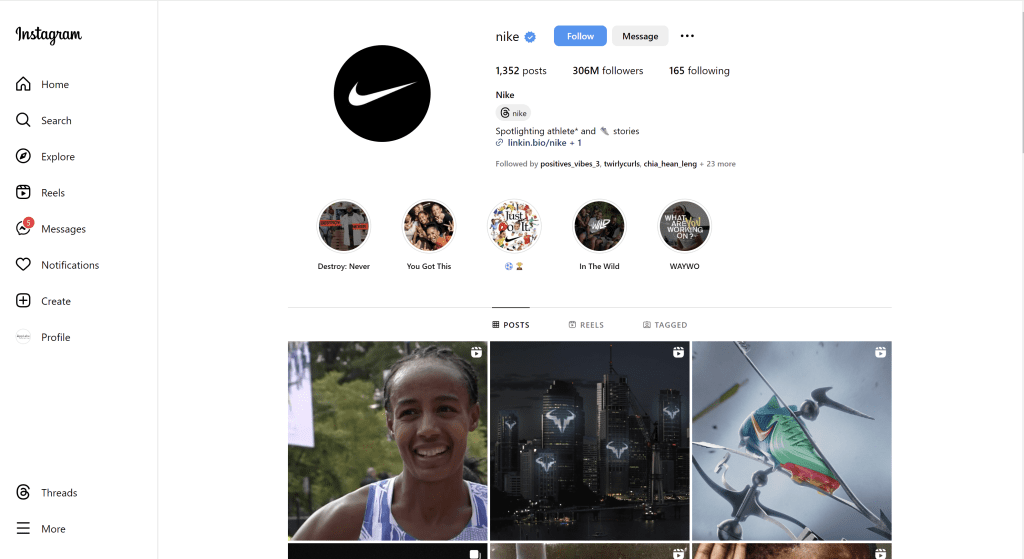
Content Creation and Storytelling
Compelling content is the heartbeat of social media success.
Crafting narratives that resonate with your audience enhances brand recall and fosters a sense of community.
- Visual Appeal:
- Leverage the power of visual content. Posts with images receive 2.3 times more engagement than those without.
- Utilize high-quality images, infographics, and videos to convey your brand’s story.
- Storytelling Techniques:
- Share behind-the-scenes content to humanize your brand.
- Craft consistent narratives that align with your brand values and resonate with your audience’s emotions.
- Example: Starbucks’ Instagram feed is a masterclass in visual storytelling.
With over 17.9 million followers, Starbucks seamlessly combines product showcases with user-generated content and relatable captions, creating a narrative that extends beyond coffee to community and lifestyle.
Community Building and User Engagement
Building a thriving online community fosters brand loyalty and advocacy. Engaging with your audience transforms them into active participants rather than passive observers.
- Community Participation:
- Encourage user-generated content through branded hashtags and contests.
- Respond promptly to comments and direct messages, fostering a sense of connection.
- Brand Advocacy:
- Identify and engage with brand advocates within your community.
- Leverage user testimonials and positive interactions to amplify brand credibility.
- Example: Glossier, a skincare and beauty brand, has built a community on Instagram with over 2.9 million followers.
They actively involve their community in product development, share user-generated content, and maintain open communication, creating a strong sense of belonging among their audience.
Strategic Use of Paid Advertising
While organic reach is valuable, strategic paid advertising can significantly amplify your brand’s visibility and reach a broader audience.
- Targeted Advertising:
- Utilize social media advertising features to target specific demographics.
- Leverage retargeting ads to re-engage users who have previously interacted with your brand.
- Ad Formats:
- Experiment with various ad formats, including carousel ads, video ads, and sponsored posts.
- Create visually compelling and concise ads that align with platform specifications.
- Example: Airbnb’s strategic use of Facebook advertising has contributed to its global success.
With targeted ads showcasing unique properties and experiences, Airbnb reaches a vast audience. Their approach involves storytelling, emphasizing the personal and authentic experiences their platform offers.
4. Optimizing Website and Content for Search Engines
In the fast-paced digital landscape of 2024, mastering the art of search engine optimization (SEO) is crucial for ensuring your brand’s visibility.
By implementing strategic optimizations on your website and content, you can not only climb search engine rankings but also enhance user experience and engagement.

Keyword Research and Integration
The foundation of effective SEO lies in understanding the keywords your target audience is using and strategically incorporating them into your website and content.
- Tools for Keyword Research:
- Utilize tools like Google Keyword Planner, Semrush, and Ahrefs for comprehensive keyword research.
- Identify high-volume, relevant keywords in your industry to guide content creation.
- Long-Tail Keywords:
- Embrace long-tail keywords to capture specific search queries.
- Long-tail keywords account for 70% of all web searches, emphasizing their significance in SEO.
- Example: Amazon’s product listings exemplify strategic keyword integration.
Each product description is meticulously crafted with relevant keywords, facilitating better search visibility. For instance, a search for “wireless noise-cancelling headphones” yields Amazon listings due to their precise keyword targeting.
On-Page SEO Techniques
Optimizing individual pages on your website is a critical aspect of on-page SEO, influencing search engine rankings and user engagement.
- Title Tags and Meta Descriptions:
- Craft compelling title tags and meta descriptions with relevant keywords.
- Ensure meta descriptions provide concise summaries that encourage click-throughs.
- Header Tags (H1, H2, H3):
- Utilize header tags to structure content hierarchically.
- Header tags assist search engines in understanding the content hierarchy and improve readability.
- Internal Linking:
- Implement internal links to connect related content within your website.
- Internal linking enhances user navigation and distributes link authority.
- Example: Moz, an SEO authority, optimizes its blog posts with well-crafted title tags, meta descriptions, and header tags.
By incorporating relevant keywords and maintaining a clear content hierarchy, Moz improves its search engine visibility, as demonstrated by its consistently high rankings for SEO-related queries.
High-Quality and Relevant Content Creation
Content remains king in the realm of SEO.
Crafting high-quality, relevant content not only attracts users but also establishes authority in your industry.
- User Intent and Content Alignment:
- Align your content with user intent by addressing their needs and queries.
- Google’s algorithms prioritize content that best satisfies user intent.
- Diverse Content Formats:
- Incorporate diverse content formats such as blog posts, videos, infographics, and podcasts.
- Diversification enhances user engagement and accommodates varied preferences.
- Evergreen and Updated Content:
- Create evergreen content that maintains relevance over time.
- Regularly update existing content to reflect changes in industry trends or information.
- Example: HubSpot’s blog exemplifies effective content creation.
With a plethora of in-depth, well-researched articles covering diverse aspects of digital marketing, HubSpot consistently attracts organic traffic. Their content addresses user intent, providing valuable insights and solutions to common challenges.
Mobile-Friendly Optimization
Given the prevalence of mobile device usage, optimizing your website for mobile compatibility is no longer optional but imperative for SEO success.
- Responsive Design:
- Ensure your website has a responsive design that adapts to various screen sizes.
- Google prioritizes mobile-friendly websites in its rankings.
- Page Loading Speed:
- Optimize images and minimize unnecessary scripts to improve page loading speed.
- A one-second delay in page response can result in a 7% reduction in conversions.
- Mobile-First Indexing:
- Understand and embrace Google’s mobile-first indexing approach.
- Mobile-friendly websites are more likely to rank higher in search results.
- Example: Airbnb’s mobile website provides an exceptional user experience, featuring a responsive design that seamlessly adapts to different devices.
With a visually appealing and user-friendly interface, Airbnb ensures optimal engagement for mobile users, contributing to its SEO success.
Technical SEO Best Practices
Beyond content and design, technical SEO plays a pivotal role in search engine rankings and overall website performance.
- XML Sitemap:
- Generate and submit an XML sitemap to assist search engines in crawling your website.
- Sitemaps enhance indexation and visibility.
- Robots.txt:
- Optimize your robots.txt file to guide search engine crawlers on which pages to index or exclude.
- Ensure critical pages are accessible to crawlers.
- SSL Encryption:
- Implement SSL encryption (https) to secure data transmission.
- Google considers SSL as a ranking factor, prioritizing secure websites.
- Example: Shopify’s technical SEO prowess is evident in its well-structured sitemap, clean robots.txt configuration, and SSL implementation. These optimizations contribute to Shopify’s robust online presence and high rankings for e-commerce-related queries.
User Experience (UX) and Accessibility
Search engines prioritize websites that provide a positive user experience.
Optimizing for accessibility not only improves SEO but also widens your audience reach.
- Site Navigation:
- Streamline site navigation for easy user access to important pages.
- A clear and intuitive navigation structure enhances user experience.
- Alt Text for Images:
- Include descriptive alt text for images to improve accessibility.
- Alt text aids users with visual impairments and reinforces image relevance to search engines.
- Mobile Accessibility:
- Test your website’s accessibility on various devices and screen readers.
- Websites with good accessibility practices often rank higher in search results.
- Example: The World Health Organization (WHO) website is a prime example of prioritizing accessibility.
With alt text for images, clear navigation, and compatibility with screen readers, WHO ensures a seamless user experience for diverse audiences, contributing to its widespread visibility.
Link-Building Strategies
Link-building remains a crucial element of SEO, signaling authority and trust to search engines.
- Quality Backlinks:
- Prioritize quality over quantity when acquiring backlinks.
- Google values backlinks from authoritative and relevant websites.
- Guest Posting:
- Engage in guest posting on reputable industry-related websites.
- Quality guest posts with contextual backlinks enhance your brand’s authority.
- Internal Linking:
- Strategically incorporate internal links within your content.
- Internal links distribute link authority and improve user navigation.
- Example: Moz’s link-building strategies have played a pivotal role in establishing the brand as an SEO authority.
Through high-quality content and effective outreach, Moz has accumulated backlinks from authoritative sources, contributing to its prominence in search engine results.
5. Exploring Influencer Partnerships
In the dynamic digital landscape of 2024, influencer partnerships have become a cornerstone of successful marketing strategies.
Leveraging the reach and authenticity of influencers can significantly amplify brand visibility, foster community engagement, and drive conversions. Let’s delve into the intricacies of influencer collaborations and explore key strategies for optimal results.

Understanding the Impact of Influencer Marketing
Influencer marketing has witnessed exponential growth, emerging as a powerful tool for brands to connect with their target audience.
Understanding the impact of influencer marketing sets the stage for effective collaboration.
- Influencer Marketing Growth:
- The popularity of influencer marketing worldwide is growing at such a high speed that the global market size is expected to reach 22.2 billion U.S. dollars by 2025.
- The industry’s rapid growth underscores its effectiveness in reaching and resonating with audiences.
- Consumer Trust in Influencers:
- Ninety per cent of customers will choose a product that comes with a person’s recommendation (even if they don’t know that person) over one lacking this endorsement.
- Influencers, with their authentic and relatable content, build trust that directly impacts consumers’ purchasing decisions.
Identifying the Right Influencers
The success of influencer partnerships hinges on selecting influencers whose values align with your brand and who have genuine influence over your target audience.
- Relevance and Alignment:
- Choose influencers whose content aligns with your brand’s values, industry, and target demographic.
- The relevance ensures a natural integration of your brand into the influencer’s content.
- Audience Demographics:
- Utilize influencer marketing platforms and analytics tools to analyze the demographics of an influencer’s audience.
- Ensure that the influencer’s followers align with your target customer profile.
- Micro-Influencers vs. Macro-Influencers:
- Micro-influencers, with a smaller but highly engaged audience, often offer more authentic connections.
- Macro-influencers may provide a broader reach but can be less effective in niche markets.
- Example: The collaboration between fashion brand Daniel Wellington and micro-influencers on Instagram is a notable example.
By strategically partnering with influencers known for their aesthetic and lifestyle alignment, Daniel Wellington saw a surge in brand awareness and sales.
Building Authentic Relationships with Influencers
Fostering genuine relationships with influencers is pivotal for the success and longevity of influencer partnerships.
- Communication and Transparency:
- Establish clear communication channels, ensuring transparency regarding campaign objectives and expectations.
- Transparent collaborations contribute to the authenticity of influencer content.
- Mutual Value Exchange:
- Recognize the value influencers bring to your brand and compensate them fairly.
- Offering fair compensation or providing exclusive experiences fosters a positive relationship.
- Long-Term Partnerships:
- Consider cultivating long-term partnerships with influencers to build continuity and trust.
- Long-term collaborations often result in more authentic and integrated content.
- Example: Nike’s long-standing partnership with basketball legend LeBron James is a testament to the power of authentic, enduring relationships.
Beyond mere endorsements, the collaboration embodies shared values, resulting in impactful campaigns and sustained brand loyalty.

Strategic Campaign Planning
Effective influencer marketing requires strategic planning, aligning campaigns with overall marketing goals, and leveraging influencers as valuable brand advocates.
- Clear Campaign Objectives:
- Define clear objectives for influencer campaigns, whether it’s brand awareness, product launches, or conversions.
- Clear objectives provide influencers with a roadmap for content creation.
- Creative Freedom with Guidelines:
- Provide influencers with creative freedom while offering clear guidelines aligned with your brand.
- A balance between creative freedom and brand guidelines ensures authenticity and relevance.
- Measurable Key Performance Indicators (KPIs):
- Establish measurable KPIs such as engagement rates, click-through rates, and conversions.
- Analyzing KPIs enables data-driven insights for campaign optimization.
- Example: Fashion retailer Zara’s influencer campaigns strategically coincide with new collection launches. By providing influencers with creative freedom to showcase Zara products in their unique styles, the brand generates buzz and anticipation around each collection.
Leveraging Different Social Media Platforms
Different social media platforms offer unique opportunities for influencer collaborations. Understanding the strengths of each platform is key to maximizing impact.
- Instagram’s Visual Appeal:
- Instagram is a visual-centric platform, making it ideal for fashion, beauty, and lifestyle influencers.
- Instagram Stories and IGTV offer dynamic storytelling opportunities.
- YouTube for In-Depth Content:
- YouTube is a powerful platform for in-depth product reviews, tutorials, and long-form content.
- Collaboration with YouTubers allows for detailed brand storytelling.
- X’s (formerly Twitter) Real-Time Engagement:
- X (formerly Twitter) excels in real-time engagement and conversations.
- Collaborating with influencers on X (formerly Twitter) can amplify live events or trending topics.
- Example: The collaboration between tech giant Apple and YouTuber Marques Brownlee (MKBHD) showcases the power of leveraging YouTube for product reviews. Brownlee’s detailed and unbiased reviews contribute to Apple’s product visibility and credibility.
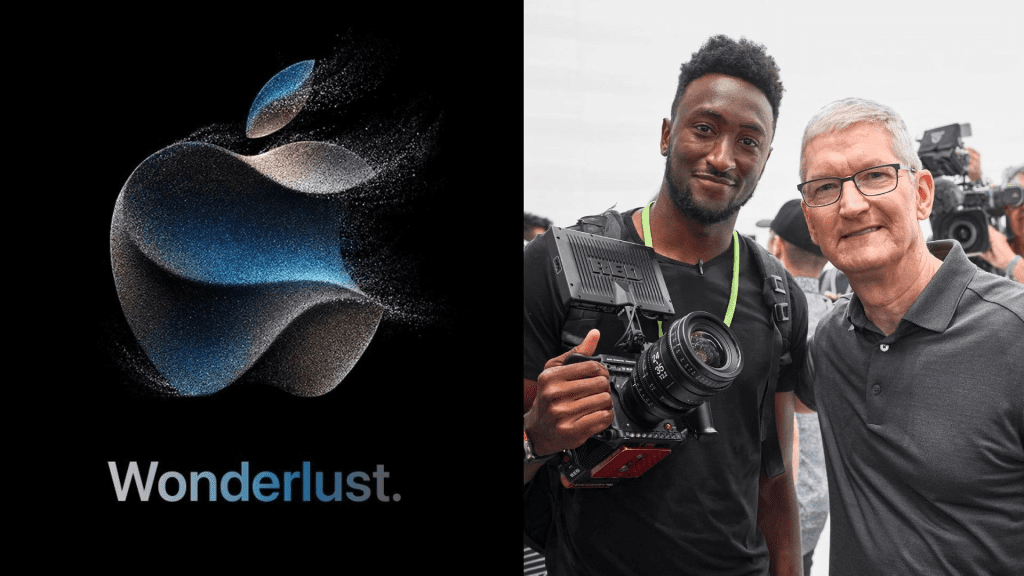
Compliance and Ethical Considerations
Navigating the legal and ethical aspects of influencer marketing is crucial to maintaining trust with both consumers and influencers.
- FTC Guidelines:
- Familiarize yourself with and adhere to the Federal Trade Commission (FTC) guidelines on influencer partnerships.
- Clearly disclose any sponsored content to maintain transparency.
- Authenticity Over Endorsements:
- Encourage influencers to provide honest opinions and authentic reviews.
- Genuine endorsements contribute to long-term credibility.
- Ethical Considerations:
- Prioritize ethical considerations, ensuring that influencers align with your brand’s values.
- Influencers with authentic values contribute to a positive brand image.
- Example: Fashion brand Patagonia’s collaboration with influencers emphasizes sustainability and ethical practices. The influencers chosen are advocates for eco-friendly living, aligning seamlessly with Patagonia’s commitment to environmental responsibility.
Measuring ROI and Performance Metrics
Quantifying the return on investment (ROI) and performance metrics of influencer campaigns is essential for refining strategies and optimizing future collaborations.
- Engagement Metrics:
- Track engagement metrics such as likes, comments, shares, and follower growth.
- High engagement rates indicate resonance with the influencer’s audience.
- Conversion Tracking:
- Implement tracking mechanisms to measure conversions driven by influencer campaigns.
- Conversion data provides insights into the direct impact on sales and revenue.
- Brand Sentiment Analysis:
- Conduct sentiment analysis to gauge the overall perception of the influencer campaign.
- Analyzing sentiment helps refine future collaborations and brand positioning.
- Example: Gymshark, a fitness apparel brand, meticulously tracks engagement metrics across influencer collaborations.
By measuring the impact on website traffic, conversion rates, and social media interactions, Gymshark adapts its influencer strategy to align with evolving market trends.
6. Embracing Visual and Video Content
In the digital era of 2024, the consumption patterns of online audiences continue to evolve, emphasizing the importance of visual and video content in digital marketing strategies.
To enhance brand visibility and engage audiences effectively, brands must embrace the power of visual and video content in their SEO endeavours.
Let’s explore the key strategies and benefits associated with this approach.
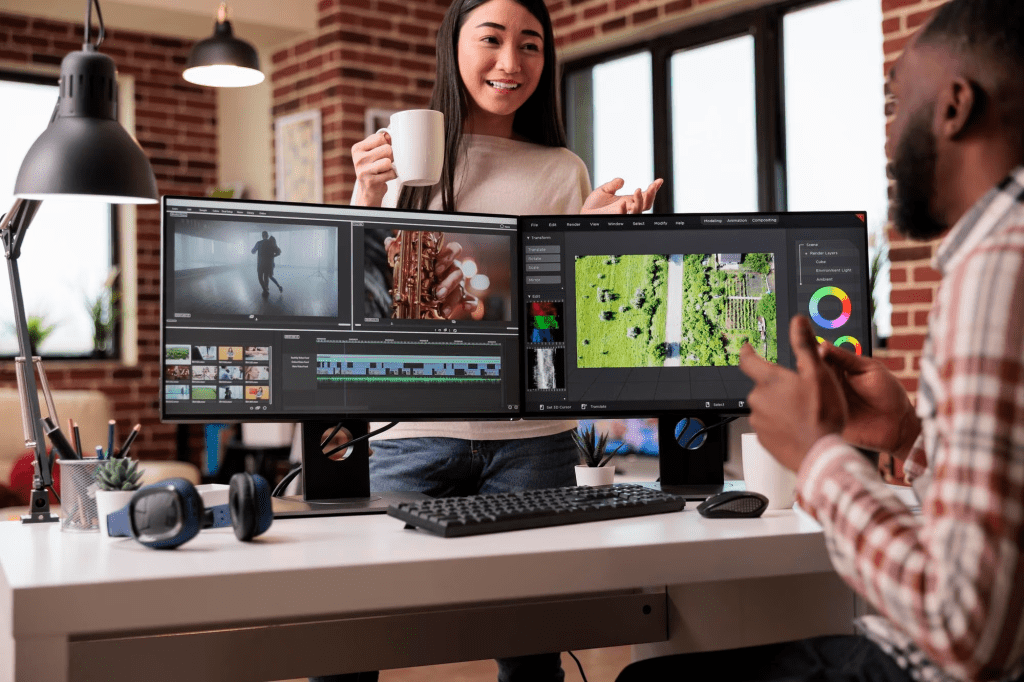
The Dominance of Visual Content in Online Engagement
Visual content has become a linchpin in online engagement, capturing the attention of audiences and conveying messages more effectively than text alone.
- Visuals Enhance Message Retention:
- Only 10% of people who hear information remember it 3 days later. When you combine that information with an image, however, 65% of people will remember it.
- Integrating visuals into content enhances message retention and brand recall.
- Rise of Image-Centric Platforms:
- Platforms like Instagram, Pinterest, and Snapchat thrive on image and video content.
- Instagram exemplifies the popularity of visually driven platforms.
- Example: National Geographic’s Instagram account stands out as a prime example of visual storytelling.
With stunning imagery and concise captions, they engage millions of followers by creating a visually immersive experience that aligns with their brand’s exploration and discovery theme.
Video Content’s Impact on User Engagement
The surge in video consumption has reshaped the digital landscape, with video content taking center stage in user engagement and SEO strategies.
- YouTube as the Second-Largest Search Engine:
- YouTube solidifies its position as the internet’s second-largest search engine.
- Brands leveraging video content on YouTube tap into a vast audience actively searching for information and entertainment.
- Dwell Time and SEO Rankings:
- Longer dwell times, often associated with video content, positively influence SEO rankings.
- Google’s algorithm prioritizes content that keeps users engaged, making video an impactful medium.
- Example: TED Talks’ YouTube channel exemplifies the potency of video content. With thought-provoking talks and visually compelling presentations, TED engages a global audience. Many TED Talks rank high in search results, contributing to the brand’s widespread visibility.

Strategies for Effective Visual Content Creation
Crafting compelling visual content requires a strategic approach that aligns with brand identity and resonates with the target audience.
- Consistent Brand Aesthetics:
- Maintain a consistent visual identity across all platforms to reinforce brand recognition.
- Consistency in color schemes, typography, and visual style fosters a cohesive brand image.
- Infographics for Information Delivery:
- Infographics are highly shareable and effective in conveying complex information.
- According to a study, infographics are shared on social media three times more than any other type of content.
- Interactive Visuals for Engagement:
- Leverage interactive visuals such as quizzes, polls, and interactive infographics.
- Interactive content boosts engagement and encourages user participation.
- Example: Adobe’s consistent use of visual content across platforms, from Instagram to their website, exemplifies effective brand aesthetics. Their visually stunning designs and infographics showcase the creative possibilities of Adobe products, reinforcing their position as industry leaders.
Harnessing the Power of Video Marketing
Video marketing has emerged as a dynamic tool for brands to connect with audiences emotionally and deliver impactful messages.
- Storytelling Through Video:
- Storytelling in video form creates emotional connections with audiences.
- Nike’s “Dream Crazy” campaign featuring Colin Kaepernick is a powerful example of storytelling through video, driving both engagement and brand loyalty.
- Live Video for Real-Time Engagement:
- Live video on platforms like Facebook, Instagram, and YouTube fosters real-time engagement.
- When comparing pre-recorded and live videos, live streams enjoy six times the interactions—at least on Facebook, emphasizing the immediacy of live content.
- Video SEO Optimization:
- Optimize video content for SEO with keyword-rich titles, descriptions, and tags.
- Transcribe videos to make them accessible to search engines and improve search rankings.
- Example: Red Bull’s video marketing strategy is iconic. From extreme sports documentaries to adrenaline-pumping stunts, Red Bull creates visually captivating content that aligns with its brand ethos of energy and excitement.
Their videos often go viral, contributing to global brand visibility.
The Impact of Visual and Video Content on Social Media
Social media platforms serve as dynamic spaces for visual and video content consumption, providing brands with unparalleled opportunities for engagement.
- Instagram’s Visual Storytelling:
- Instagram’s emphasis on visual storytelling makes it an ideal platform for brands.
- Instagram Stories, in particular, offer a temporary yet impactful way to engage audiences.
- Pinterest’s Visual Discovery:
- Pinterest’s visual discovery platform allows brands to showcase products and ideas.
- Brands with visually appealing products, such as fashion and home decor, thrive on Pinterest.
- TikTok’s Short-Form Video Trend:
- TikTok’s explosive growth showcases the popularity of short-form video content.
- Brands embracing TikTok leverage its trend-driven, creative atmosphere to connect with younger audiences.
- Example: Starbucks’ Instagram strategy seamlessly integrates visual and video content. Their Instagram Stories showcase limited-time promotions, while their main feed features visually appealing product shots.
Starbucks effectively leverages the visual nature of Instagram to engage and connect with its audience.

SEO Benefits of Visual and Video Content
Beyond engagement, visual and video content offers tangible SEO benefits that contribute to improved search rankings.
- Reduced Bounce Rates:
- Visual and video content often leads to lower bounce rates as users spend more time on pages.
- Google interprets lower bounce rates as a signal of content relevance and quality.
- Backlink Generation:
- Visually compelling content is more likely to be shared, leading to natural backlink generation.
- Backlinks from reputable sources contribute positively to SEO rankings.
- Featured Snippets and Rich Results:
- Visual and video content is more likely to be featured in rich results and snippets.
- Google prioritizes content that enhances the user experience, providing more opportunities for visibility.
- Example: HubSpot’s blog, known for its comprehensive visual content, frequently secures featured snippets in search results.
By incorporating visual elements into their blog posts, HubSpot enhances user experience and increases the likelihood of being featured prominently in search results.
Optimizing Visual and Video Content for Accessibility
Ensuring that visual and video content is accessible to all users, including those with disabilities, is a critical aspect of a comprehensive digital strategy.
- Alt Text for Images:
- Include descriptive alt text for images to make them accessible to screen readers.
- Alt text not only aids users with visual impairments but also contributes to SEO.
- Closed Captions for Videos:
- Add closed captions to videos for those who may be hard of hearing.
- Closed captions also make video content accessible in environments where audio cannot be played.
- Responsive Design:
- Ensure that visual and video content is displayed appropriately on various devices with different screen sizes.
- Responsive design contributes to a positive user experience and supports SEO efforts.
- Example: The BBC’s commitment to accessibility is evident in its visual and video content.
With comprehensive alt text, closed captions, and responsive design, the BBC ensures that its content is accessible to diverse audiences, aligning with its mission of providing information to everyone.
7. Capitalizing on Emerging Technologies
In the rapidly evolving digital landscape of 2024, staying ahead of the curve involves embracing and capitalizing on emerging technologies.
Incorporating these technologies into your SEO strategy can not only enhance brand visibility but also future-proof your online presence. Let’s delve into key areas where brands can leverage emerging technologies for SEO success.

Utilizing Artificial Intelligence (AI) in SEO
Artificial Intelligence has become a game-changer in the SEO realm, offering unparalleled capabilities for data analysis, automation, and personalized user experiences.
- AI-Powered Content Creation:
- AI tools like OpenAI’s GPT-3 enable automated content creation that aligns with SEO best practices.
- 64% of B2B marketers consider AI to be valuable in their marketing strategy.
- Chatbots for User Engagement:
- Implement AI-powered chatbots to enhance user engagement on your website.
- Chatbots provide instant responses to user queries, improving user experience and increasing time spent on your site.
- Predictive Analytics for SEO Forecasting:
- Leverage AI-driven predictive analytics to forecast SEO trends and identify opportunities.
- Predictive analytics can help tailor your content strategy based on anticipated user behavior.
- Example: Grammarly, a writing assistance tool, utilizes AI to analyze and enhance written content. Through advanced algorithms, Grammarly provides real-time suggestions for improving grammar, tone, and clarity, showcasing the potential of AI in content optimization.
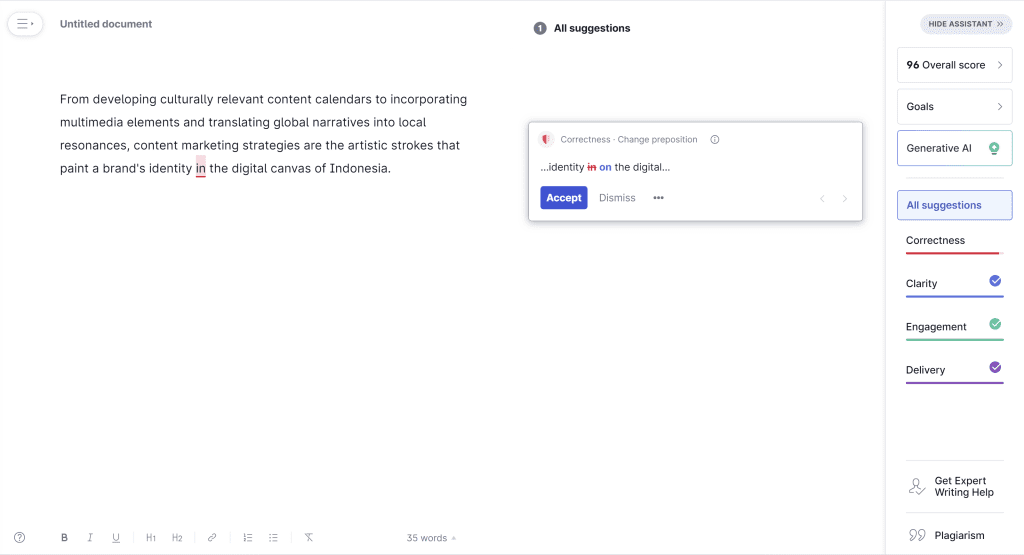
Implementing Voice Search Optimization Strategies
The proliferation of voice-activated devices has given rise to the prevalence of voice search, necessitating tailored strategies for SEO.
- Conversational Keywords:
- Optimize content for conversational keywords that mirror natural language queries.
- By 2026, estimates suggest that more than 150 million voice assistants in the United States alone.
- Featured Snippets for Voice Search:
- Optimize content to secure featured snippets, as they are often the source for voice search responses.
- Google Home and Amazon Echo prioritize featured snippet content when delivering voice search results.
- Local SEO for Voice Queries:
- Prioritize local SEO efforts, as a significant portion of voice searches are location-specific.
- Ensuring accurate business information on platforms like Google My Business is crucial for voice search optimization.
- Example: Domino’s Pizza has embraced voice search by allowing customers to place orders through platforms like Google Assistant.
By optimizing its online presence for voice queries related to pizza orders, Domino’s taps into the convenience and accessibility of voice-activated technology.
Blockchain Technology for SEO Transparency
Blockchain technology, renowned for its transparency and security features, is gradually finding its way into SEO strategies.
- Enhanced Backlink Verification:
- Implement blockchain to enhance the transparency and authenticity of backlinks.
- Verified backlinks through blockchain reduce the risk of black hat SEO practices.
- Decentralized Search Engines:
- Explore the potential of decentralized search engines built on blockchain principles.
- These engines can prioritize user privacy and provide transparent ranking algorithms.
- Combatting Click Fraud:
- Blockchain can be employed to combat click fraud by ensuring the validity of user interactions.
- By reducing fraudulent clicks, brands can allocate their budget more efficiently.
- Example: Adbank, a blockchain-based ad platform, aims to address issues of fraud in digital advertising. By utilizing blockchain, Adbank provides transparency in ad impressions and clicks, fostering trust among advertisers.
Augmented Reality (AR) and Virtual Reality (VR) Enhancements
The immersive experiences offered by AR and VR technologies present unique opportunities for SEO innovation.
- Visualizing Products Through AR:
- Implement AR to allow users to visualize products in their real-world environment.
- AR enhances the user experience and can reduce product return rates.
- VR for Virtual Showcases:
- Utilize VR to create virtual showrooms or experiences.
- VR can be particularly impactful in industries like real estate, allowing virtual property tours.
- Interactive 3D Content for SEO:
- Develop interactive 3D content that engages users and encourages longer time spent on your site.
- Google’s search algorithms increasingly favor interactive and engaging content.
- Example: IKEA’s AR app allows users to visualize how furniture will look in their homes before making a purchase. By integrating AR into their customer experience, IKEA not only enhances user engagement but also assists in the decision-making process.
Progressive Web Apps (PWAs) for Enhanced User Experience
PWAs combine the best features of websites and mobile apps, offering a seamless and engaging user experience.
- Faster Loading Times:
- PWAs are designed to load quickly, reducing bounce rates and improving user satisfaction.
- Google’s mobile-first indexing prioritizes websites with faster loading times.
- Offline Accessibility:
- PWAs allow users to access content even when offline, enhancing user engagement.
- Offline accessibility ensures that users can interact with your content regardless of their internet connection.
- Push Notifications for Engagement:
- Implement push notifications through PWAs to re-engage users.
- Push notifications can drive traffic back to your site, contributing to SEO metrics.
Edge Computing for Faster Website Performance
Edge computing brings computation and data storage closer to the user, reducing latency and enhancing website performance.
- Improved Page Load Speed:
- Edge computing reduces the physical distance between servers and users, resulting in faster page load times.
- Faster loading contributes to lower bounce rates and improved SEO rankings.
- Enhanced Security and Reliability:
- Edge computing enhances security by reducing the exposure of sensitive data to potential threats.
- Improved reliability ensures a consistent user experience.
- Dynamic Content Delivery:
- Utilize edge computing to deliver dynamic content tailored to users’ geographical locations.
- Personalized content contributes to a more engaging user experience.
- Example: Cloudflare, a leading edge computing provider, offers services that enhance website performance, security, and reliability. By leveraging edge computing, Cloudflare ensures that websites using their services benefit from reduced latency and improved load times.
8. Monitoring and Analyzing Performance
In the ever-evolving landscape of digital marketing, continuous monitoring and analysis of performance metrics are imperative for SEO success.
By adopting a data-driven approach, brands can identify strengths, address weaknesses, and refine strategies to maximize online visibility and engagement. Let’s explore the key components of monitoring and analyzing performance for SEO excellence.

Comprehensive Keyword Tracking and Analysis
Keyword tracking remains a foundational element of SEO, offering insights into search engine rankings and user behaviour.
- Rank Tracking Tools:
- Utilize rank-tracking tools like Semrush, Ahrefs, or Moz to monitor keyword rankings over time.
- Regular tracking enables brands to identify fluctuations and adjust strategies accordingly.
- Competitor Keyword Analysis:
- Analyze the keywords your competitors are targeting to identify potential gaps or opportunities.
- Understanding the competitive landscape informs your own keyword strategy.
- Long-Tail Keyword Performance:
- Monitor the performance of long-tail keywords to understand specific user intent.
- Long-tail keywords often contribute to more targeted traffic and higher conversion rates.
- Example: The success of Amazon in keyword tracking is evident through its strategic use of long-tail keywords.
By optimizing product listings with specific and relevant long-tail keywords, Amazon ensures that its vast array of products is discoverable by users searching for niche items.
Website Traffic Analysis and User Behavior Insights
Analyzing website traffic and user behaviour provides invaluable insights into the effectiveness of your SEO strategies.
- Google Analytics Integration:
- Integrate Google Analytics to track overall website traffic, user demographics, and behaviour.
- Google Analytics offers detailed reports on page views, bounce rates, and user journeys.
- Conversion Tracking:
- Implement conversion tracking to measure the success of specific actions or goals.
- Understanding the conversion funnel helps optimize for desired user actions.
- User Engagement Metrics:
- Monitor user engagement metrics such as time on page, click-through rates, and interaction with key elements.
- High engagement metrics correlate with positive SEO signals.
- Example: HubSpot excels in website traffic analysis by leveraging Google Analytics. Through detailed reports on user behaviour, traffic sources, and content performance, HubSpot refines its content strategy and ensures its website serves the needs of its audience.
Backlink Monitoring and Quality Assessment
Backlinks play a crucial role in SEO, and monitoring their quantity and quality is essential for maintaining a strong online presence.
- Backlink Tracking Tools:
- Use backlink tracking tools like Majestic or Ahrefs to monitor new backlinks and track changes over time.
- Analyze the anchor text, domain authority, and relevance of acquired backlinks.
- Competitor Backlink Analysis:
- Conduct regular competitor backlink analyses to identify opportunities for acquiring high-quality backlinks.
- Benchmarking against competitors aids in setting realistic goals.
- Disavow Toxic Backlinks:
- Regularly assess backlinks for quality and disavow toxic links that may negatively impact SEO.
- Google’s Disavow Tool allows you to communicate to Google which links to ignore.
- Example: Moz, a leader in SEO tools, provides a comprehensive Backlink Explorer that allows users to analyze their own backlinks and those of competitors.
By assessing the authority and relevance of backlinks, Moz enables users to make informed decisions about their link-building strategies.
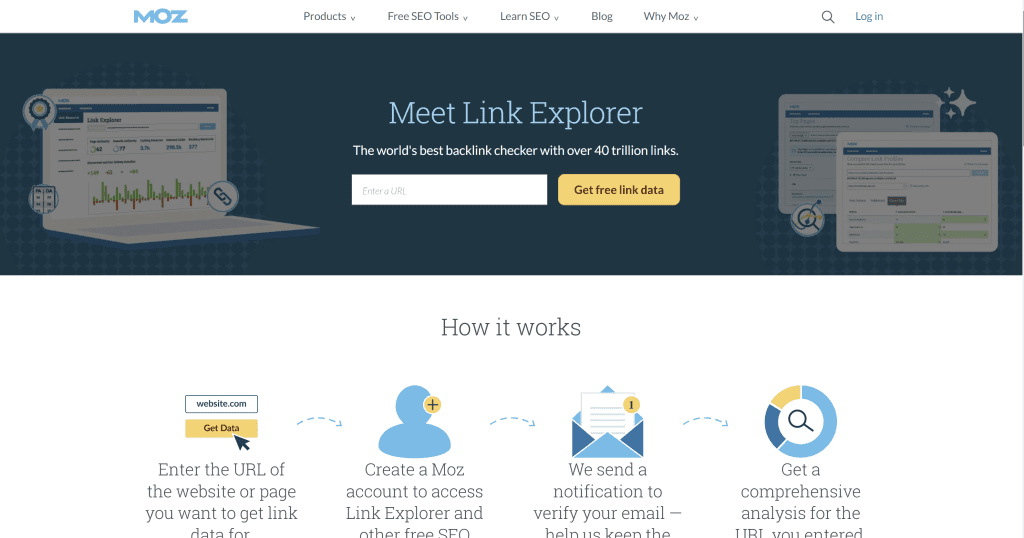
Page Speed and Mobile Responsiveness Analysis
Page speed and mobile responsiveness are critical factors influencing user experience and search engine rankings.
- Page Speed Insights:
- Utilize tools like Google PageSpeed Insights to assess the loading speed of your website.
- Faster-loading pages contribute to improved user experience and higher search rankings.
- Mobile-Friendly Testing:
- Conduct regular mobile-friendly tests using tools like Google’s Mobile-Friendly Test.
- Google prioritizes mobile-friendly websites, and mobile-friendliness is a ranking factor.
- Core Web Vitals Analysis:
- Pay attention to Core Web Vitals metrics, including Largest Contentful Paint (LCP) and Cumulative Layout Shift (CLS).
- Google considers Core Web Vitals as a ranking factor, emphasizing the importance of user-centric performance metrics.
- Example: Airbnb is a prime example of a website that prioritizes both page speed and mobile responsiveness. With a mobile-friendly design and optimized performance, Airbnb ensures a seamless user experience, contributing to its high search engine rankings.
Content Performance Tracking and Optimization
Content is the backbone of SEO, and tracking its performance helps refine strategies and align with user intent.
- Top-Performing Content Identification:
- Identify top-performing content based on metrics like organic traffic, engagement, and conversions.
- Leverage tools like Google Analytics or Search Console for detailed content performance insights.
- Content Gap Analysis:
- Conduct content gap analyses to identify topics or keywords that competitors are ranking for but your site is not.
- Addressing content gaps helps expand your website’s visibility in search results.
- Content Updates and Refreshes:
- Regularly update and refresh existing content to ensure relevance and align with evolving search intent.
- Google rewards fresh and updated content with improved rankings.
Local SEO Performance Monitoring
For businesses with a local presence, monitoring local SEO performance is crucial for attracting nearby customers.
- Google My Business Insights:
- Leverage Google My Business (GMB) Insights to monitor local search performance, including visibility, engagement, and customer actions.
- GMB is a key tool for local businesses to enhance their online presence.
- Local Keyword Rankings:
- Track local keyword rankings to understand how well your business is positioned in local search results.
- Localized keywords enhance visibility for users in specific geographical areas.
- Online Reviews Analysis:
- Monitor and analyze online reviews on platforms like Google, Yelp, or TripAdvisor.
- Positive reviews contribute to trustworthiness while addressing negative reviews helps manage online reputation.
- Example: The local SEO strategy of Starbucks is evident through its optimized Google My Business profile.
With accurate business information, regular updates, and positive customer reviews, Starbucks maximizes its visibility in local search results, driving foot traffic to its physical locations.
Regular SEO Audits and Compliance Checks
Regular SEO audits ensure that your website adheres to best practices, and compliance checks help identify and rectify issues promptly.
- Technical SEO Audits:
- Conduct technical SEO audits to identify issues like broken links, crawl errors, and indexation problems.
- Tools like Screaming Frog or Google Search Console aid in technical audits.
- Schema Markup Implementation:
- Ensure the implementation of schema markup to enhance the visibility of rich snippets in search results.
- Rich snippets contribute to higher click-through rates.
- Compliance with Core Algorithm Updates:
- Stay informed about major search engine algorithm updates and ensure compliance.
- Regular updates align your strategies with evolving search engine requirements.
- Example: The Washington Post, a prominent news outlet, exemplifies the importance of regular SEO audits.
By regularly reviewing and optimizing its website for technical SEO factors, The Washington Post maintains a strong online presence, ensuring its content remains accessible and well-ranked.

9. Building Partnerships and Collaborations
Collaborations and partnerships have become integral to SEO strategies in dynamic digital marketing.
By forging strategic alliances, brands can amplify their online visibility, tap into new audiences, and create mutually beneficial relationships.
Let’s explore the key components and strategies for building partnerships and collaborations that drive SEO success.

Strategic Alliances with Influencers and Thought Leaders
Partnering with influencers and thought leaders in your industry can significantly enhance your brand’s visibility and credibility.
- Identifying Relevant Influencers:
- Use influencer marketing platforms like Traackr or Influencity to identify influencers in your niche.
- Collaborate with influencers whose audience aligns with your target demographic.
- Leveraging Influencer Content:
- Encourage influencers to create content that features your products or services.
- User-generated content from influencers can be powerful in building brand awareness.
- Measuring Influencer Impact:
- Utilize tracking tools to measure the impact of influencer collaborations on website traffic and conversions.
- Track metrics such as click-through rates and social engagement.
- Example: Gymshark’s collaboration with fitness influencers has been a key driver of its online success. By partnering with influencers who resonate with their fitness-focused audience, Gymshark has built a strong online community and achieved significant brand visibility.
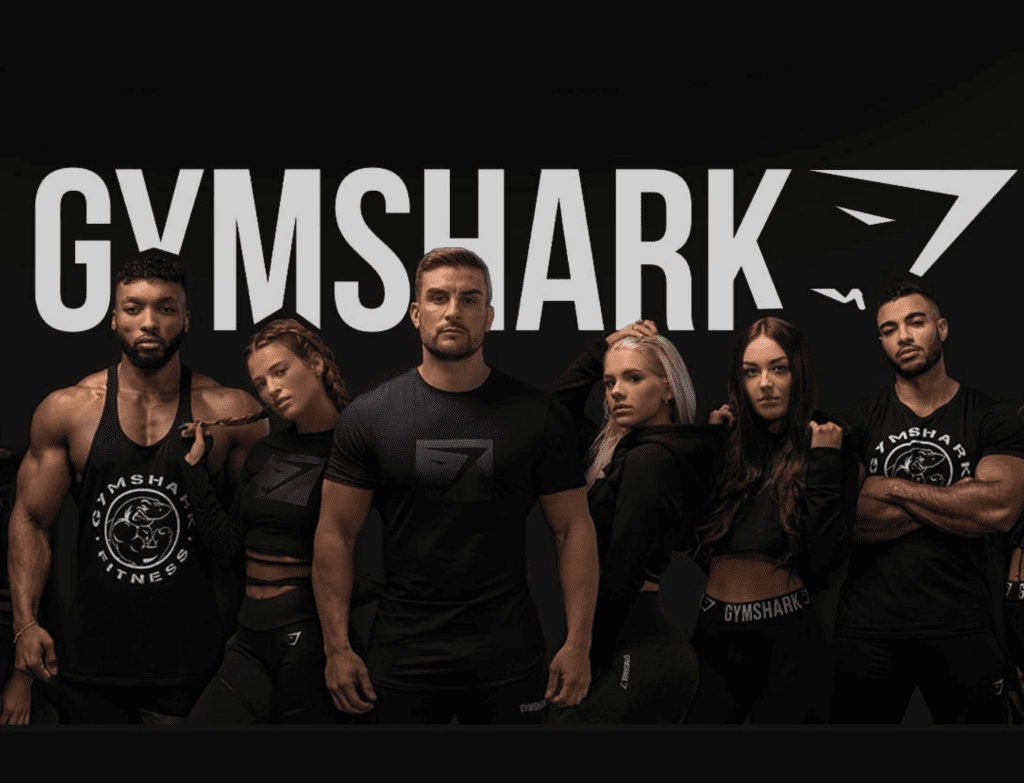
Cross-Industry Collaborations for Diversified Audiences
Collaborating with brands outside your industry can open up new avenues for audience engagement and organic backlinks.
- Identifying Complementary Brands:
- Identify brands in different industries that share a similar target audience.
- Seek collaborations that provide mutual value to both brands and their audiences.
- Creating Joint Content Initiatives:
- Collaborate on joint content initiatives such as webinars, podcasts, or co-authored blog posts.
- Shared content can attract diverse audiences and increase brand exposure.
- Link-Building Opportunities:
- Leverage cross-industry collaborations for natural link-building opportunities.
- Backlinks from reputable sites in different industries can positively impact SEO rankings.
- Example: The collaboration between Spotify and Starbucks is a prime example of cross-industry collaboration. By integrating Spotify playlists into Starbucks stores, the brands created a unique experience for customers, enhancing both their online and offline visibility.

Partnerships with E-commerce Platforms and Marketplaces
For e-commerce businesses, forming partnerships with popular platforms and marketplaces can exponentially increase product visibility.
- Integration with E-commerce Giants:
- Explore partnerships with e-commerce giants like Amazon, eBay, or Etsy.
- Integration with these platforms can result in increased product visibility and sales.
- Utilizing Affiliate Marketing Programs:
- Implement affiliate marketing programs to collaborate with influencers and bloggers.
- Affiliate partnerships contribute to both referral traffic and SEO through quality backlinks.
- Optimizing Product Listings for Search:
- Ensure that product listings on partner platforms are optimized for relevant keywords.
- Well-optimized listings improve visibility in both platform-specific searches and general search engines.
- Example: Shopify’s collaboration with Instagram enables businesses to sell products directly through the Instagram app. This integration not only expands the reach of Shopify merchants but also leverages Instagram’s visual platform for increased brand visibility.
Collaborative Content Marketing Strategies
Pooling resources with other brands for content creation can result in more comprehensive and engaging materials.
- Content Co-Creation:
- Collaborate with other brands to co-create content, such as ebooks, guides, or research papers.
- Shared resources can lead to higher-quality content that attracts a broader audience.
- Leveraging Guest Blogging Opportunities:
- Exchange guest blog posts with complementary brands in your industry.
- Guest blogging not only diversifies content but also builds valuable backlinks.
- Webinar and Podcast Collaborations:
- Host joint webinars or podcasts with industry peers.
- These collaborative efforts can reach a larger audience and drive traffic to both participating brands.
- Example: Moz and BuzzSumo’s collaborative study on content and SEO trends is a notable example of co-created content. By combining their expertise, the brands produced a comprehensive report that garnered widespread attention and backlinks from authoritative sites.
Building Relationships with Local Businesses and Organizations
Local partnerships can have a significant impact on local SEO efforts, especially for businesses with a physical presence.
- Local Business Collaborations:
- Partner with local businesses for joint promotions, events, or campaigns.
- Local collaborations can enhance visibility in local search results.
- Participation in Community Events:
- Participate in community events and sponsorships to build relationships with local organizations.
- Event participation contributes to local brand awareness and positive associations.
- Local SEO Citations and Backlinks:
- Seek partnerships that can result in local citations and backlinks.
- Local SEO benefits from mentions in local publications, directories, and community websites.
- Example: The partnership between a local coffee shop and a bookstore for a joint book reading event is a simple yet effective example. This collaboration not only attracts local customers but also generates local media coverage, contributing to both businesses’ local SEO efforts.
Utilizing Coordinated Social Media Campaigns
Social media collaborations can amplify your brand’s reach and engagement, driving traffic to your website.
- Coordinated Giveaways and Contests:
- Collaborate with other brands for joint giveaways or contests on social media.
- Coordinated campaigns can attract a larger audience and increase social media followers.
- Shared Social Media Takeovers:
- Swap social media accounts for a day with a complementary brand.
- Takeovers provide exposure to each other’s followers and create a sense of community.
- Collaborative Hashtag Campaigns:
- Create and promote hashtag campaigns in collaboration with other brands.
- Shared campaigns increase the visibility of the hashtag and associated brands.
- Example: The #ShareACoke campaign by Coca-Cola is a prime example of a successful social media collaboration.
By personalizing their product with individual names and encouraging users to share photos on social media, Coca-Cola created a viral campaign that increased brand visibility and engagement.

Monitoring and Measuring Partnership Impact on SEO Metrics
To ensure the effectiveness of partnerships, continuous monitoring and measurement of SEO metrics are essential.
- Analytics Tracking:
- Utilize analytics tools to track website traffic, conversions, and engagement resulting from partnerships.
- Google Analytics and other tracking tools provide valuable insights.
- Backlink Monitoring:
- Regularly monitor backlinks generated through partnerships.
- High-quality backlinks contribute to improved SEO rankings.
- Conversion Attribution:
- Implement conversion attribution models to understand how partnerships contribute to conversions.
- Attribution models help allocate credit to each touchpoint in the customer journey.
- Example: Unilever’s partnership with Oath, a digital media company, aimed to reach and engage consumers through innovative advertising formats.
By monitoring metrics such as click-through rates, impressions, and engagement, Unilever gauged the impact of the partnership on brand visibility and user interaction.
Conclusion
In the ever-shifting landscape of digital marketing, mastering the art of brand visibility is not just a pursuit; it’s a strategic imperative.
As we step into 2024, the dynamics of online presence continue to evolve, presenting both challenges and unprecedented opportunities for businesses aiming to carve their niche in the digital realm.
The journey to increase brand visibility in this landscape requires a comprehensive approach that integrates innovative strategies, cutting-edge technologies, and a deep understanding of the digital ecosystem.
The Pivotal Role of Data-Driven Insights
At the core of any successful brand visibility strategy lies the power of data-driven insights. The ability to decipher user behaviour, understand market trends, and adapt strategies based on real-time analytics is paramount.
Tools such as Google Analytics, Semrush, and Ahrefs play instrumental roles in unravelling the intricacies of user engagement, keyword performance, and website traffic patterns.
By harnessing the wealth of information provided by these tools, brands can make informed decisions, optimizing their digital presence for maximum impact.
The SEO Arsenal: Crafting a Holistic Approach
Search Engine Optimization (SEO) remains an undeniable cornerstone of brand visibility, and in 2024, its significance has only intensified.
From mastering the art of voice search optimization to delving into the intricacies of AI-driven content creation, brands must adapt and embrace emerging technologies to stay ahead.
A meticulous keyword strategy, combined with a vigilant eye on algorithm updates, propels brands to the forefront of search engine results.
Moreover, the amalgamation of SEO with local search tactics ensures that businesses not only appear on global searches but also resonate with local audiences.
Content, the Unassailable King
In an era where content saturation is a reality, the quality and relevance of content stand as non-negotiables.
Crafting compelling narratives, engaging visuals, and interactive media experiences captivates audiences, fostering a sense of connection.
Whether through video marketing, podcasting, or immersive storytelling, brands must innovate to create content that not only captures attention but also aligns with the values and interests of their target audience.
In the quest for brand visibility, content is not just a means; it’s the unassailable king that reigns over the digital kingdom.
Strategic Partnerships: Amplifying Reach
Collaboration emerges as a potent catalyst for brand visibility in 2024.
From influencer partnerships that leverage niche audiences to cross-industry collaborations that tap into diverse markets, forming strategic alliances is more than a trend—it’s a game-changer.
E-commerce partnerships, local collaborations, and social media campaigns contribute to a tapestry of visibility that extends beyond traditional boundaries.
By navigating the terrain of partnerships with creativity and purpose, brands can amplify their reach and forge connections that resonate.
Embracing Tech Frontiers: AI, AR, VR, and Beyond
The integration of emerging technologies is not just an option; it’s a necessity for brands aiming to thrive in 2024 and beyond.
Artificial Intelligence (AI) transforms content creation, voice search reshapes user interactions, and Augmented Reality (AR) and Virtual Reality (VR) redefine immersive experiences.
Brands that embrace these technological frontiers not only stay relevant but also pioneer new ways of engaging with their audience.
As the digital landscape becomes increasingly sophisticated, those who harness the power of tech innovations emerge as trailblazers in the quest for brand visibility.
Data Security and Ethical Practices: A Prerequisite, Not an Afterthought
Amidst the pursuit of brand visibility, ethical considerations, and data security must not be relegated to the background. The contemporary consumer is discerning, valuing transparency, authenticity, and a commitment to responsible practices.
Brands that prioritize data privacy, adhere to ethical standards, and communicate their values resonate with an audience that extends loyalty beyond transactions.
In an era where trust is the currency of engagement, ethical considerations are not just a compliance requirement; they are the bedrock of enduring brand visibility.
The Continuous Journey: Monitoring, Adapting, Thriving
The quest for brand visibility is not a destination; it’s a continuous journey marked by adaptability and resilience.
The digital landscape evolves, algorithms undergo transformations, and consumer behaviours shape-shift. In this dynamic milieu, brands that adopt a mindset of continuous monitoring and adaptation thrive.
Regular SEO audits, performance analytics, and an openness to embrace emerging trends position brands not as spectators but as active participants in the unfolding narrative of digital visibility.
As we step boldly into 2024, the roadmap to increased brand visibility is delineated by innovation, collaboration, and a commitment to excellence.
It’s a roadmap where data illuminates the path, content reigns supreme, partnerships amplify reach, and technology is harnessed for transformative experiences.
In this landscape, visibility is not merely about being seen; it’s about leaving an indelible imprint in the hearts and minds of the digital audience.
The journey beckons and the brands that navigate it with strategic acumen, creativity, and a relentless pursuit of excellence are destined to illuminate the digital horizon.
If you are looking for a top-class digital marketer, then book a free consultation slot here.
If you find this article useful, why not share it with your friends and business partners, and also leave a nice comment below?
We, at the AppLabx Research Team, strive to bring the latest and most meaningful data, guides, and statistics to your doorstep.
To get access to top-quality guides, click over to the AppLabx Blog.
People also ask
How do you increase brand visibility?
To increase brand visibility, focus on strategic SEO practices, optimizing website content, and leveraging social media. Embrace emerging technologies like AI and AR, forge influencer partnerships, and participate in cross-industry collaborations. Consistent monitoring, quality content creation, and ethical practices contribute to sustained visibility and audience engagement.
How do you drive brand visibility?
Drive brand visibility through strategic SEO, crafting compelling content, and active social media engagement. Embrace innovative technologies, leverage influencer partnerships, and participate in collaborative initiatives. Monitor performance, adapt strategies, and prioritize ethical practices for lasting impact.
How do you maximize brand exposure?
Maximize brand exposure by optimizing for SEO, creating shareable content, and engaging on social media. Utilize influencer collaborations, participate in cross-industry ventures, and embrace emerging technologies. Regularly assess and adapt strategies for sustained visibility and audience connection.




































